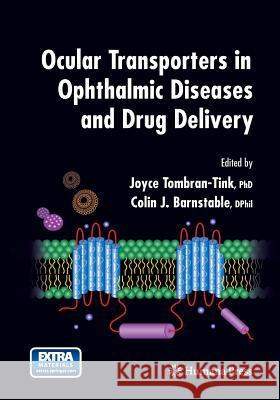Ocular Transporters in Ophthalmic Diseases and Drug Delivery » książka
Ocular Transporters in Ophthalmic Diseases and Drug Delivery
ISBN-13: 9781627038652 / Angielski / Miękka / 2014 / 467 str.
Ocular Transporters in Ophthalmic Diseases and Drug Delivery
ISBN-13: 9781627038652 / Angielski / Miękka / 2014 / 467 str.
(netto: 958,46 VAT: 5%)
Najniższa cena z 30 dni: 963,86
ok. 22 dni roboczych
Dostawa w 2026 r.
Darmowa dostawa!
Detection and responses to light are common features found throughout the plant and animal kingdoms. In most primitive life forms, a patch of light-sensitive cells make up a region containing a cell sheet devoid of any specialized anatomical structure. With the development of the eyes in more advanced life forms, light-sensing structures became more complex but primitive eyes are still in contiguity with other body tissues and fluids. The evolution of the eyeball promoted an increase in visual acuity and visual processing that, in turn, allowed vision to become the dominant sensory system for many species, including humans. The formation of a totally enclosed structure, however, required a unique set of solutions to enable the eye to control its environment. Like most organs, the eye evolved a series of homeostatic mechanisms to regulate its environment within tightly controlled limits. Unlike most organs, however, this advanced light-sensing structure has a series of requirements that place a tremendous burden on molecules that are responsible for controlling ocular homeostasis. There are many sig naling molecules and pathways that work in parallel or through crosstalk to maintain the normal ocular environment required for visual function. Perhaps none are so critical as the group of membrane molecules that are collectively termed transporters. These molecules are responsible for the controlled and selective movements of ions, nutrients, and fluid across various ocular layers necessary to optimize the internal milieu to p- serve visual function.











